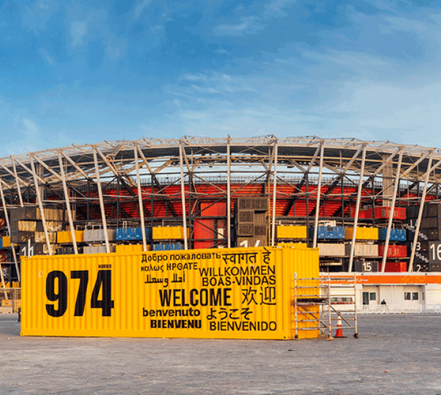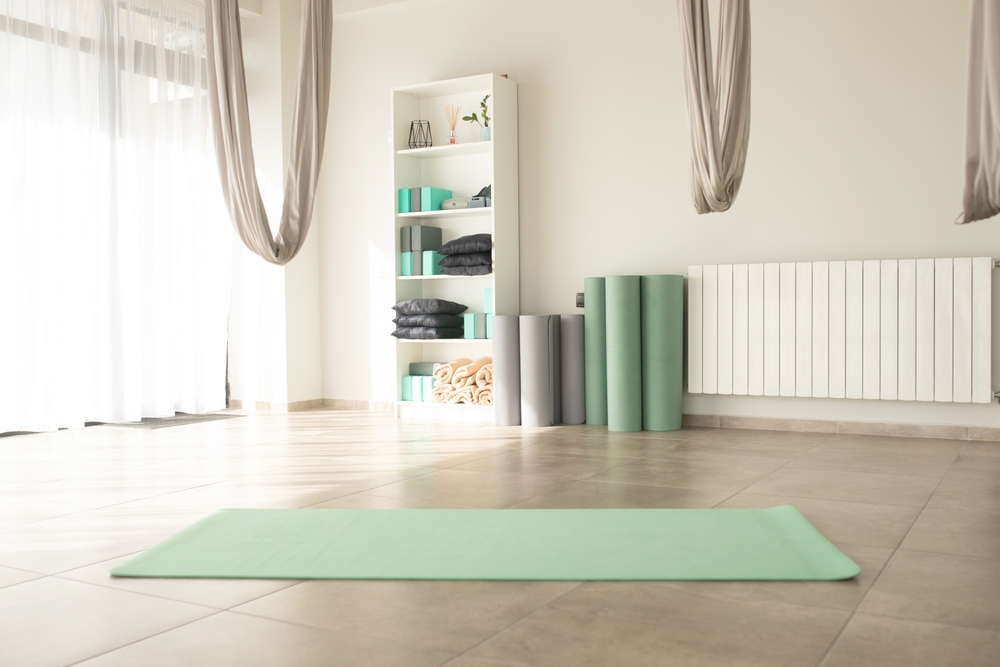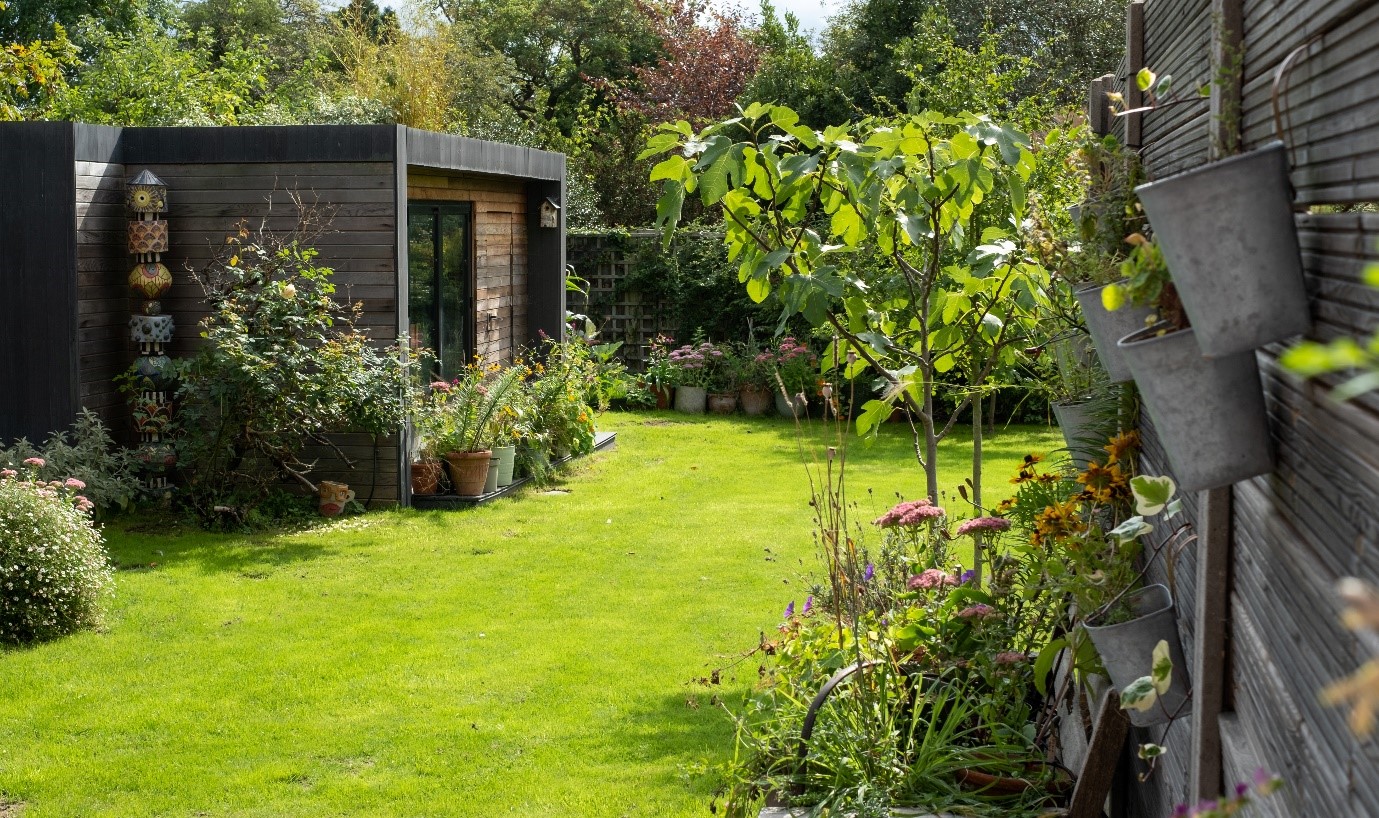
There’s been a lot of controversy surrounding the Qatar 2022 World Cup, from how they won the bid to the treatment of workers and human rights. But it can’t be denied, there’s at least one thing which they appear to have got right…
Stadium 974.

Situated in Ras Abu Aboud, this impressive structure made history before its first match – hailed as a ‘pioneering example of big event sustainability’.
Not only is it constructed from repurposed shipping containers – 974, to be exact. It’s the first ever football stadium to be fully demountable. Following the tournament, the containers will be taken down and re-used to create a new business and entertainment development in Qatar.
Qatar’s Supreme Committee have stated that the 2022 World Cup will be a carbon-neutral event.
This innovative 40,000 seat venue certainly demonstrates the country’s commitment to sustainability. And whilst it may only exist temporarily, it’s hoped it will become a blueprint for others to follow – making ‘green building’ the norm for future tournaments.
The rise of ‘green building’
At Gap Containers, once again, we’re in awe of this magnificent use of old steel boxes.
Shipping container architecture is a new and exciting trend that’s currently sweeping the globe. It’s not just Qatar jumping on the band wagon. A growing number of architects and engineers all over the world have started to use steel containers as a sustainable building material. And we truly believe this could be the future of construction. Here we explore why.
Why is shipping container architecture sustainable?
Unfortunately, shipping containers have become somewhat of a ‘disposable’ item.
Most countries import goods at a much higher volume and frequency than they export them. And it’s usually far cheaper to receive a new container than it is to send one back empty to the supplier. As a result, millions now lie dormant in warehouses and yards across the world.
Not only do these dormant structures contribute to the global waste crisis, the continuous production of new containers also leads to increased resource waste (i.e. fossil fuels). In turn, this adds to the level of greenhouse gas emissions – and, ultimately, global warming.
So how can shipping container architecture help?
Essentially, it’s a form of recycling.
Rather than letting the containers stack up, they can be used as a green building material and repurposed to create a stadium or sports venue, like Stadium 974. A home, office space, gym, swimming pool, storage unit – or anything else that a forward-thinking architect puts their mind to.
And this process of repurposing and re-use has many benefits for the environment – helping to cut down on waste, conserving natural resources and significantly reducing carbon emissions.

Other benefits of using containers as a sustainable building material
Protecting the planet is the main driving force behind shipping container architecture – but that doesn’t mean it’s the only benefit. Using containers as a building material can offer the construction industry a range of other advantages, including:
1. Affordability
Compared to traditional building materials, sustainable options typically come with a higher price tag. But this isn’t the case for shipping containers. In fact, they’re incredibly cost-effective. Used containers can be bought at a low-cost and fabricated in line with the specified budget – therefore making ‘green building’ a viable option for more projects.
2. Speed
Shipping containers are an efficient way to build.
Stadium 974 is a large, complex structure – therefore, it took around 2 years to construct in total. However, smaller, more simple designs can be created in a matter of a few days or weeks.
What’s more, the structure can be fabricated at the builder’s site and then easily transported to its location via a Hiab wagon. This reduces the need for heavy machinery, materials and personnel at the project site – and, as such, can help to reduce the carbon footprint of the project even further.
3. Creativity
Green architecture – particularly that which uses containers – allows for creativity.
Not limited to the confinements of traditional methods and modifications, the architect can think outside of the box and come up with truly innovative and unique designs – designs that simply wouldn’t be possible with bricks and mortar.

Green container conversions at Gap
Here at Gap Containers, we’re by no means visionary architects or specialist engineers. But we do believe that shipping containers are a fantastic option for the construction industry – and the best way for amazing buildings to be created, whilst having minimal impact on the environment.
We may not be involved in shipping container architecture ourselves, and we certainly can’t produce anything as original or breathtaking as Stadium 974. But we can supply your sustainable building materials, in the form of new and used shipping containers.
We’re also specialists in shipping container conversions and frequently recycle and repurpose containers for use as offices, classrooms, pop-up shops, mess huts, restaurants, bars, canteens, and more. So, if you have a project in mind – and have been inspired by this incredible eco-friendly World Cup venue – please don’t hesitate to get in touch with our team of experts.
We’re always on hand and would love to provide the metal building blocks for your new structure, whatever that may be. Just give us a call on 0870 240 9405. Or if you prefer, send an email to sales@gapcontainers.co.uk and we’ll respond as soon as possible.













 Reviews
Reviews